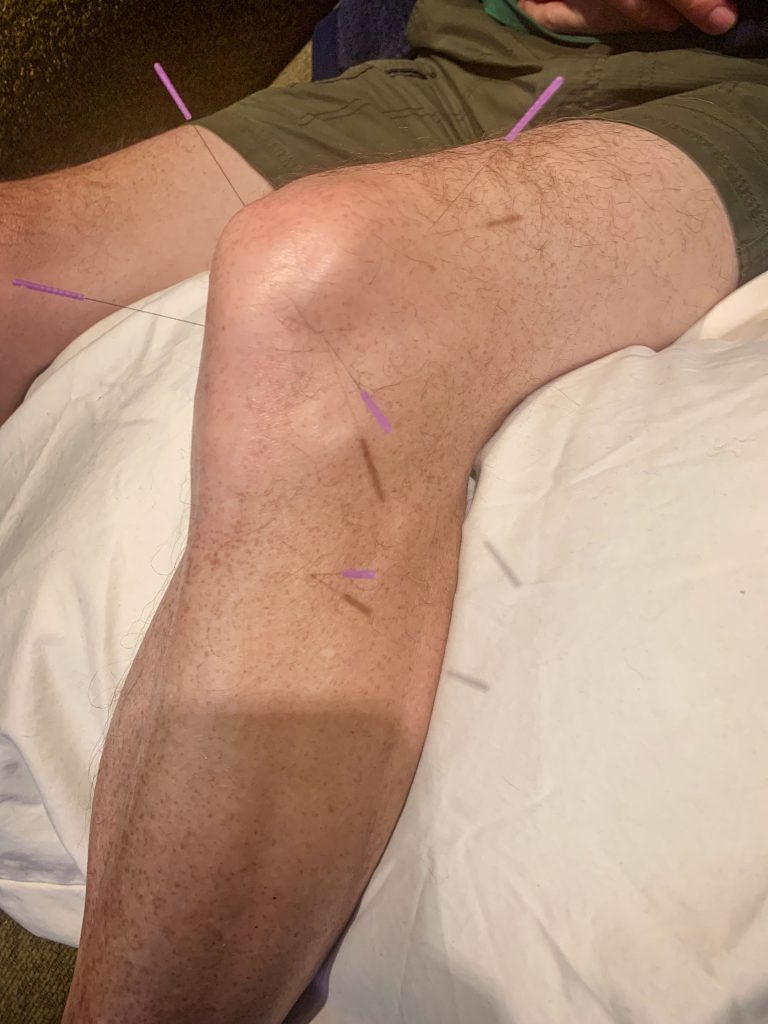The art of acupuncture

Through the use of very thin needles, acupuncture stimulates healing channels in the body to energize the body’s own innate healing response. These needles are strategically placed to aid in the recovery from a knee injury.
Nearly one out of every 10 adults in the U.S. has tried acupuncture, according to publication Acupuncture Today. Acupuncture dates back in some form for at least 2,500 years as a treatment for a wide range of conditions, including chronic pain, migraines, anxiety, depression, PTSD, insomnia, digestive issues, menstrual cramps, hormone imbalances, fertility and nausea. It originated from traditional Chinese medicine (TCM) and has gained popularity worldwide since the 1970s.
The fundamental principles of acupuncture include Qi (pronounced “chee”) flow, meridians and acupoints. According to TCM, Qi is the vital energy that flows through the body along meridians. Illness and pain are thought to occur when Qi is blocked or imbalanced.
There are believed to be 12 main and two additional meridians through which Qi flows, each associated with specific organs and bodily functions. Acupoints are specific points along the meridians where acupuncture needles are inserted, chosen based on the individual’s symptoms and the desired outcome of the treatment.
Acupuncture needles are sterile, disposable and as thin as a human hair. The needles are inserted into the chosen acupoints to influence the energy flow or Qi within the body. The depth and angle of needle insertion vary depending on the location of the needle and a mild electric current may be applied to the needles. The duration and frequency of treatment vary depending on the condition(s) being addressed.
The art of acupuncture is to restore balance within the body; relieve pain, stress or discomfort; and promote overall well-being. Vonda Muncy, DACM, licensed acupuncturist and owner of Castle Pines Acupuncture, explained, “We’re looking at the body as a whole. The whole point of acupuncture is to get you in parasympathetic dominance, which is rest and digest, so you should feel relaxed; that’s a signal that your body is doing the work it needs to do to restore the body in the way that it needs to.”
Acupuncture’s effects are still being researched, but some researchers believe acupuncture stimulates the release of endorphins, which are the body’s natural pain-relieving chemicals. Others suggest that acupuncture may influence the nervous system, helping to regulate pain signals.
Often, acupuncture is used in conjunction with conventional treatment, so work with your health care practitioner. Find a licensed acupuncturist who has experience treating your particular concern.
By Lisa Nicklanovich; photo courtesy of Vonda Muncy